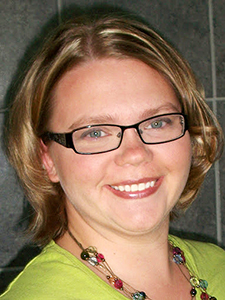Editor’s note: You’re going to read a lot about leadership in the following pages, and I hope the conversation continues in your communities after you’ve put this magazine down and moved on to action. In this space, I’m going to practice a leadership skill I am trying to develop in myself: knowing when to delegate.
This editorial was written as a result of a one- evening experiment in magazine design: We pulled together some creative people and asked them to work with us to shape this issue. One of those creative individuals, Jamie Horter of Lyons, Neb., and formerly of Bristol, S.D., wrote this guest editorial.
By Jamie Horter
Rural towns have populations of people who care deeply about their local communities. In order to maintain thriving communities, locals must be cultivated to serve as leaders.
Those of us in rural places know that finding the leaders we need is often difficult, but short-term, urgent projects show the capacity of locals to assume leadership positions.
For example, the residents of Doland recently raised $65,000 for a new gym floor so that they could retain their home games (page 31). Similar issue-based fundraising campaigns across rural communities are able to be successful because of the individuals who rise to the challenge. Whether it’s hosting a benefit for a neighbor in need, raising money for the community food bank or hosting a drive for needed infrastructure, the success of these projects depends on each person who takes initiative.
Those who step up make short-term campaigns a success. Similarly, leadership is vital to guide long-term initiatives. Long-term leadership often poses the greater challenge in rural communities. How do communities foster continuing leadership, and what are the first steps?
The most recent Prairie Idea Exchange event (read more about that project on page 4) focused on building leadership in rural communities. Rural economic developers gathered in December in Aberdeen, S.D., to share the challenges they face in their communities and some ideas on how communities can build their leadership base.
These community professionals noted that short-term projects have the best odds of finding leaders and volunteers. The chances of finding willing leaders becomes more difficult when ongoing leadership is needed. Decades-long uncontested mayoral races—which are not unusual in many Dakota small towns—exemplify the lack of willing candidates to serve, and support a narrative that stepping up to serve is a life sentence.
Despite these current challenges, communities can be proactive in turning a lack of leadership into a thriving base of individuals ready to serve.
Building leadership begins with looking to the community and noting which individuals could be engaged. Those who have volunteered in short-term campaigns are a good place to start.
Also important is asking if anyone is missing from the conversation. People may not make their talents known if they don’t know what is needed. Finding good candidates starts with building relationships and being vocal about what services are needed.
PIE participants noted that a lack of leadership training can be the bottleneck to cultivating leaders. The way to healthy leadership transition may rest in the ability of current leaders to mentor future leaders and explain what a position entails. Specific strategies for developing leaders are listed on page 26.
Communities can resolve the issue of leadership gaps by developing leaders now. Encouraging and training local leaders today will provide a prepared group of citizen leaders ready to tackle tomorrow’s needs.
Clarification: The Nov/Dec issue of Dakotafire should have stated that Dr. Tom Dean is employed by Horizon Health Care in Wessington Springs.
Editor Heidi Marttila-Losure can be reached at heidi@dakotafire.net.
 Dakotafire Get your spark here.
Dakotafire Get your spark here.




